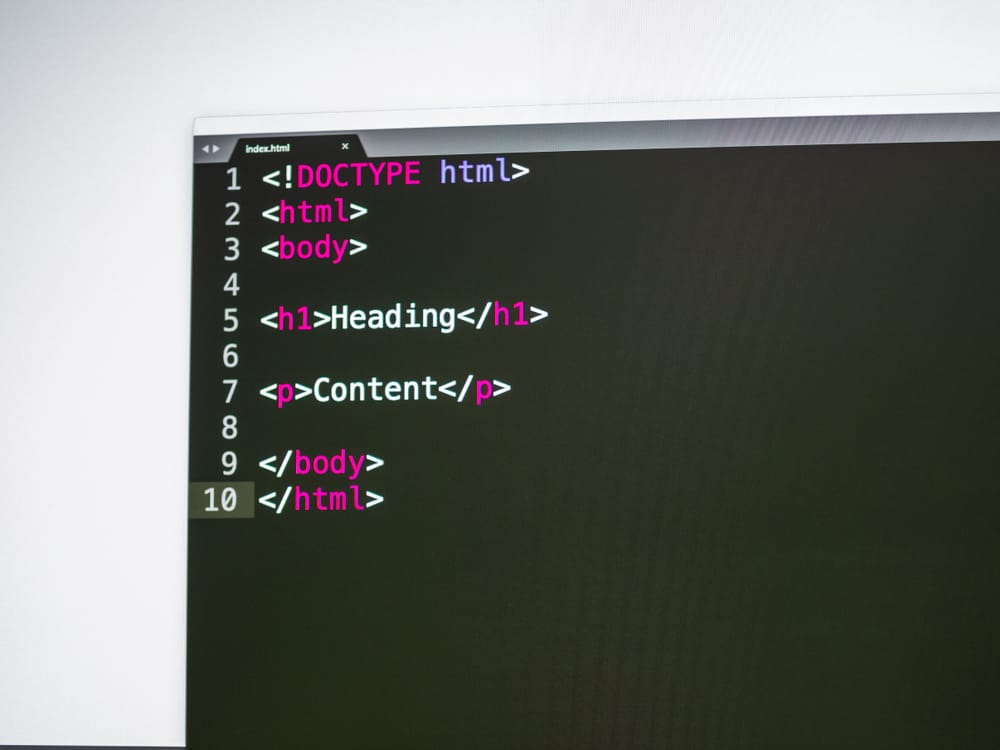
Headlines were critical for selling newspapers and attracting readers in the days before the internet. Headings are even more vital in capturing attention in this day and age of information overload. Furthermore, heading tags play an important function in SEO by assisting search engines in navigating your material. This post will go through the significance of heading tags and how to use them effectively for SEO.
What are Heading Tags?
In simple terms, heading tags play a crucial role in HTML code by helping organize your website or page, enabling Google to easily comprehend your content. These tags, ranging from H1 to H6, create a hierarchical structure for your page.
The H1 heading tag is particularly significant as it serves as the page title, giving the algorithm an understanding of the content. Following that, the H2 and H3 tags convey the importance of each piece of content in a sequential manner. Depending on the structure of your article, you can use H4, H5, and H6 tags as well. This heading hierarchy is an SEO best practice that helps reputable websites rank higher.

Why are Header Tags Important for SEO?
Headers are an important component of your entire on-page SEO strategy. These headers are used by search engines like Google to quickly crawl through a page and determine how to rank your content. Header tags not only help Google understand your content, but they also help consumers read faster.
Headers make pages scannable, which is significant because readers rarely read complete articles. Overall, adopting headers that appropriately represent your content will allow consumers and search engines to view your whole material without leaving the page.
HTML Heading Tag Best Practices for SEO
Begin with an H1 Tag
An H1 tag is an HTML tag that designates the top heading of a webpage. Ensure your H1 header tag is relevant and visually distinct to grab attention and deliver the main message of your content marketing.
Make Use of Headers for Organization
As mentioned earlier, header tags play a crucial role in organizing your content. They provide a clear indication to the reader about the information that will be covered in the upcoming section. Imagine your content as independent books, where the H1 header acts as the title, and the H2s, H3s, and so on serve as the subsequent chapters.
Use Headers to Separate Information Text
When it comes to making your website content successful, readability plays a vital role. Nowadays, users prefer easy-to-understand material, which is why readability and scanability go hand in hand. Interestingly, studies suggest that only a small percentage, about 16%, of people actually read articles word by word. That's why it's important to carefully structure your content's format, ensuring that headings help readers quickly scan through the text.
Include Keywords in Your Headers
When suggesting the incorporation of keywords, it is not intended to imply forcefully inserting keywords into headers. Instead, include relevant and significant keywords in the header only if they directly relate to the content immediately following. It is recommended to prioritize the development of content for its intended purpose before considering SEO optimization.
Optimize for Featured Snippets
To optimize for highlighted snippets, prioritize long-tail search phrases in header tags. Incorporate the solution to the query in the text below. Utilize smaller headers to define list elements, which Google will include in bulleted, numbered lists, and featured snippet results.
Maintain Consistency
Consistent UX is critical for your content strategy, especially for header tags. Use the same case format and keep them brief. Treat header tags as titles for the following material to maintain consistency easily.
Guide to Write HTML Headers in HTML 5
To write HTML headers in HTML5, use multiple header tags instead of just one H1 tag per page as required in HTML4 or earlier versions. HTML5 introduces the ARTICLE tag, enabling the division of content into smaller "mini-articles" with their own H1 tag.
Mistakes to Avoid with Header Tags
- Avoid using multiple H1 tags for optimal SEO. Google and John Mueller say you can use many H1 tags in one post, but it's not SEO best practice. Use a crawler like Screaming Frog to find pages needing H1 tag optimization.
- Avoid hiding header tags, as it can lead to a Google ranking penalty. When your header tag does not fit properly within your page or post, it makes sense to hide it. Unfortunately, concealing headers on your website can result in a Google ranking penalty.
- Use heading tags for organization and not stylization. Heading tags help Google organize and understand your page content, so they should be chosen with the overall page structure in mind, not just for visual appeal.
- Avoid excessive keyword stuffing in heading tags. Keyword stuffing is never a good idea for technical SEO. This applies to heading tags too, as unnecessary keywords can result in Google penalties and lower SERP ranking.
Google's Webmaster, John Mueller, stated that: “Don't get too dug down into all of these details and variations and instead try to find a way to make it easy for people and for scripts to understand the content and kind of the context of things on your pages.”
In summary, header tags enhance the SEO value of a website by facilitating Google's page crawling process. However, their primary function is to assist readers in quickly scanning through content. This leads to decreased bounce rates and improved writing quality. It's common for individuals to overcomplicate SEO, when the focus should be on creating high-quality content that resonates with readers. The same principle applies to the utilization of header tags.